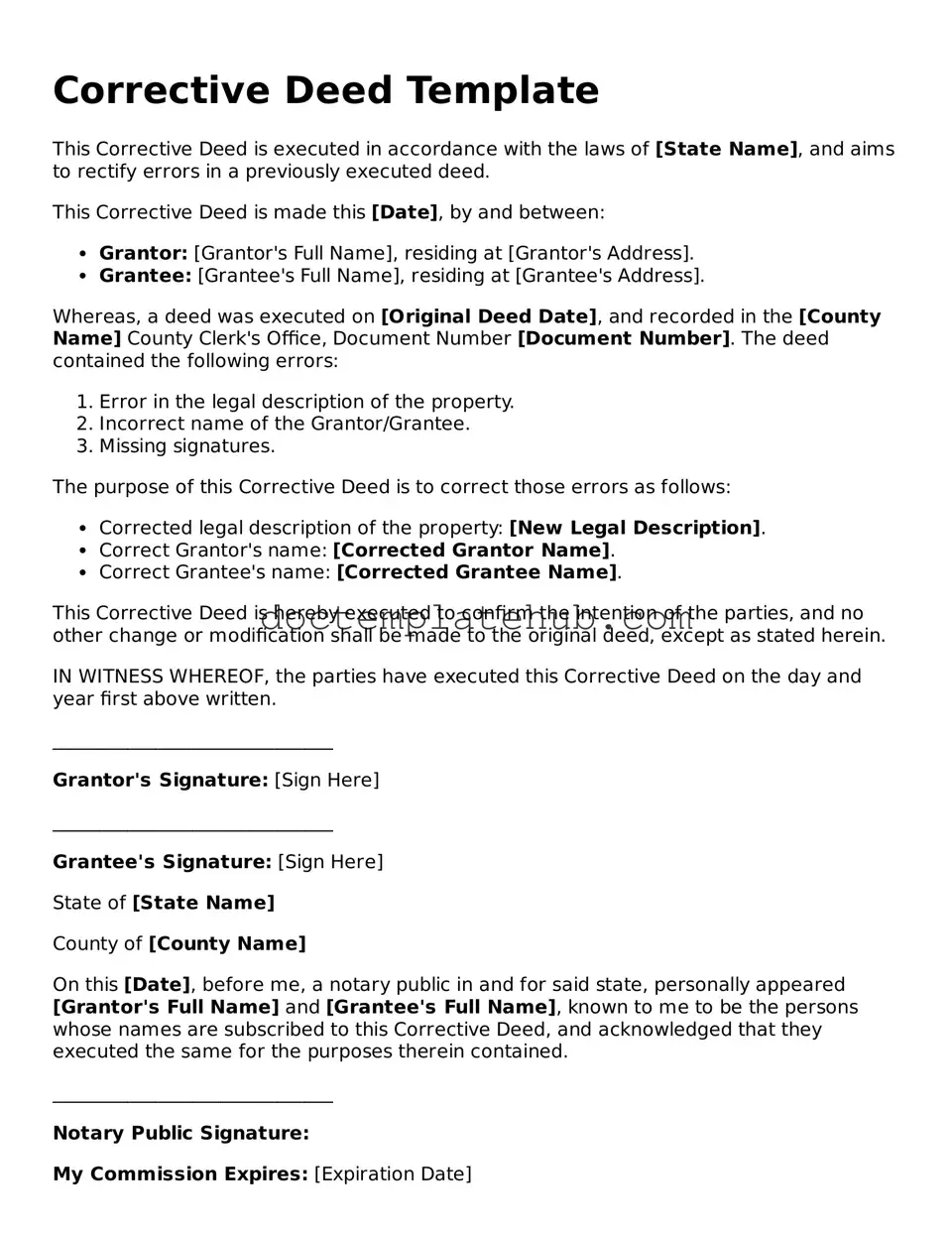What is a Corrective Deed?
A Corrective Deed is a legal document used to amend or correct errors in a previously executed deed. These errors can include mistakes in the names of parties, property descriptions, or other critical details. The purpose of this deed is to ensure that the public record accurately reflects the intentions of the parties involved in the original transaction.
When should I use a Corrective Deed?
A Corrective Deed should be utilized when there are inaccuracies in a recorded deed that need rectification. Common scenarios include misspellings of names, incorrect property boundaries, or omitted information. It is essential to address these errors promptly to prevent future disputes regarding property ownership or rights.
Who can file a Corrective Deed?
Typically, any party involved in the original deed can file a Corrective Deed. This may include the grantor (the person transferring the property) or the grantee (the person receiving the property). In some cases, a representative or attorney may also file on behalf of the parties involved, provided they have the necessary authority.
What information is required to complete a Corrective Deed?
To complete a Corrective Deed, you will need to include the original deed's details, such as the date of execution, the names of the parties, and the legal description of the property. Additionally, the specific errors that need correction should be clearly outlined. It is advisable to reference the original deed to provide clarity.
Do I need to notarize a Corrective Deed?
Yes, a Corrective Deed typically requires notarization. Notarization serves to verify the identities of the parties involved and ensures that the document is executed voluntarily. This step is crucial for the deed to be legally binding and enforceable.
How is a Corrective Deed recorded?
To record a Corrective Deed, the completed and notarized document must be submitted to the appropriate county recorder's office where the property is located. There may be a recording fee, and it is essential to keep a copy of the recorded deed for personal records.
Will a Corrective Deed affect my property title?
A Corrective Deed is intended to clarify and correct the original deed, thereby enhancing the accuracy of the property title. Once recorded, it should not adversely affect the title. In fact, it can help prevent potential legal disputes by ensuring that the public record is correct.
Can a Corrective Deed be contested?
Yes, a Corrective Deed can be contested, particularly if a party believes that the corrections made are inaccurate or do not reflect the original intent of the parties involved. In such cases, it may be necessary to seek legal counsel to resolve the dispute and ensure the deed's validity.
Is there a time limit for filing a Corrective Deed?
There is generally no specific time limit for filing a Corrective Deed. However, it is advisable to address any errors as soon as they are discovered. Delaying the correction may lead to complications, especially if the property changes hands or if disputes arise regarding ownership.
Can I create my own Corrective Deed?
While it is possible to draft your own Corrective Deed, it is recommended to seek legal assistance to ensure that the document complies with state laws and accurately reflects the necessary corrections. Properly drafted documents help avoid future legal issues and ensure clarity in property records.
